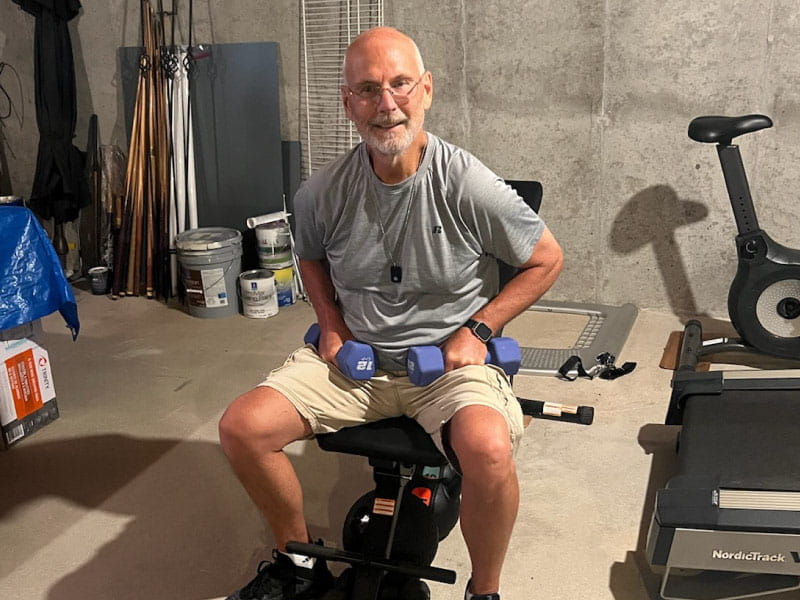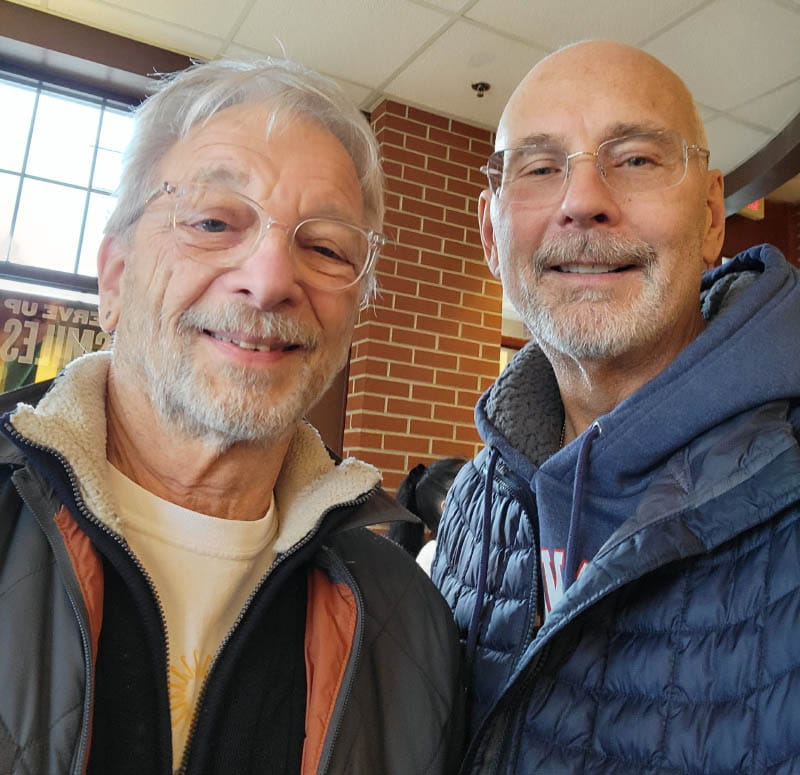Diet, exercise and 'The Stents' contributed to his recovery after a massive heart attack
By Diane Daniel, American Heart Association News

One New Year's Day, Rick St. Sauveur pulled a 10-hour shift at the supermarket where he was an assistant manager. He felt great, even after logging about 25,000 steps, according to his activity tracker.
He had the next day off, while his wife, Lorna, who also worked in retail, headed to her store.
Shortly after he woke up, Rick started to feel like he was coming down with something. He had chills, a cold sweat and felt nauseous. He assumed it was the flu.
As planned, a contractor arrived that morning to take measurements for a future bathroom remodel.
Rick got up to answer the door but couldn't manage more.
"Just do your thing and I'll be on the couch," Rick told the contractor.
Rick felt so bad that he couldn't show him to the door 10 minutes later.
This is much worse than the flu, he thought.
He popped two aspirin and called 911.
Rick was able to greet the paramedics outside of his home, but they put him directly in the ambulance. After stabilizing his heart rate and blood pressure, they headed to a hospital in Providence, Rhode Island, not far from the couple's home in Cumberland.
The next thing Rick remembers is waking up in a hospital bed, with Lorna by his side.
"You've had a massive heart attack," a doctor said. "You're lucky to be alive."
Doctors had found a 100% blockage in his left anterior descending artery. As the biggest artery in the heart, it provides about 50% of the heart muscle's blood supply. They put in two stents to open the blockage.
Rick, then 57, was stunned. His 6-foot frame had always carried his extra weight well enough. His job was physically active, and he played softball. Although he and Lorna often ate fast food on the run, he'd never felt he was unhealthy.
At work, Rick was used to putting in long hours, dealing with stressful situations and managing a large crew of workers. Now he wasn't sure what he could do physically, and he didn't know what he could handle emotionally. He felt anxious and scared.
Within a week, Rick was home from the hospital. Doctors said he would need to monitor his heart rate, but he also should move and get stronger. When they suggested that Rick attend cardiac rehabilitation, he jumped at the chance.
"I'd never even been on a treadmill or done weights," he said. "Suddenly I had cardiologists, nurses, case managers, nutritionists and psychiatrists all giving me great advice. I took full advantage of it."

Immediately, Rick began following a Mediterranean diet, focusing on fish, chicken, grains, fruits and vegetables. He cut out red meat, salt and sugar. He quickly started losing weight, going from 265 to 185 in less than a year.
"I totally changed my whole mindset on health and nutrition and what's good for you and what's not," he said.
Rick liked working out so much that after his 12 weeks of rehab he transitioned to a cardiac maintenance program. He started working out one to two hours a day and walking 5 to 8 miles a day, with Lorna often joining him on walks. He became such a success story that the staff asked him to be an ambassador, talking to other heart patients about his experiences and helping motivate them. He proudly accepted.
Meanwhile, doctors gave Rick the option of getting an implantable cardioverter defibrillator, or ICD, to monitor his heart. If the device detects an abnormal heart rhythm, it would deliver an electric shock to restore a normal heartbeat. It would also act as a pacemaker. Rick and Lorna quickly agreed. It brought them peace of mind.
Rick went back to work three months after the heart attack.
That was in 2017. In 2019, he reached another inflection point.
Despite all his efforts, Rick was diagnosed with heart failure, meaning that his heart wasn't pumping blood efficiently enough to the rest of his body. He left his job and went on disability after more than 40 years working in retail.
The strange thing about his diagnosis was that he still felt strong. He had the stamina to push through two-hour workouts at the rehab center, including when he was still working.
Then the COVID-19 pandemic hit.
"I was the last person on the last machine before rehab closed down," Rick said. "They had to drag me out."
He set up a home gym in the basement, but he missed the camaraderie with his fellow heart patients. And what about the newcomers who needed an ambassador?
In spring 2020, Rick and his cardiac rehab buddy Cliff Karten reached out to several other workout pals. They started a support group they dubbed "The Stents," starting with five members.
"When you go through something like this, there's a lot of anxiety involved," said Karten, who had a heart attack that required five stents. "You're afraid of it happening again. You don't know what you should or shouldn't do. We talk about medication, exercise, anxiety. It's different than listening to a professional. You hear from someone going through it, just like you're going through it."

The Stents pulled each other through the pandemic and continue to meet every two weeks, usually outside if the weather is nice. The original five members remain and others come and go, with up to 15 at the meetings.
Rick continues to inspire members with his dedication to daily exercise. Because he's no longer at the rehab facility, he channels his support to their group, which in turn helps his own ongoing battle with heart failure.
Although his ejection fraction (the key measurement of that condition) remains below normal, doctors continue to merely monitor it because other key numbers such as heart rate and blood pressure – as well as the length and intensity of his workouts – are so strong. Doctors tell him they're amazed he's doing so well.
It's yet another way he inspires The Stents.
Said Karten: "People see his drive and his success, and they want that for themselves."

Stories From the Heart chronicles the inspiring journeys of heart disease and stroke survivors, caregivers and advocates.





